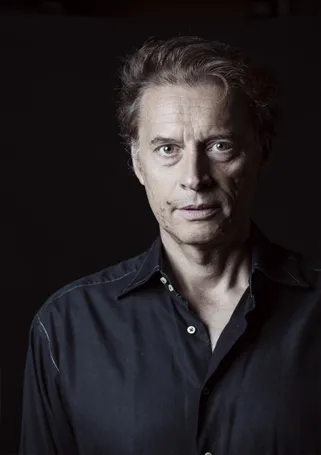Top consultant reveals ‘the enemies of terroir-driven wines’
If you want to make a wine that accurately expresses the character of a particular place, then there are five things you shouldn’t do, according to one of the world’s most influential wine consultants, Alberto Antonini.

The handful of mistakes were reeled off by the respected Italian wine consultant on 5 June in London, as he geared up to present the latest releases from a new project he is working on, Alkina Wine Estates in the Barossa – a property owned by Alejandro Bulgheroni, an Argentine oil and gas billionaire who has gone into the wine business in a big way, notably with Bodegas Garzon in Uruguay.
Speaking about the philosophy of the Australian estate, which was established in 2015, following Bulgheroni’s acquisition of vines and land near Greenock in the Barossa Valley, Antonini recorded how “he had a feeling it was a very good terroir”, having “felt the chemistry of the place” after seeing the farm for sale.
From that moment on, his aim – like in all his projects – was to “try and make wines that could deliver the essence of their origin,” which meant organic and biodynamic farming, along with regenerative approaches to soil management – which focuses on increasing the carbon content of the soil by disturbing it as little as possible.
Since the purchase, Antonini has overseen the planting of 18 hectares of vines at the estate without using any herbicides, commenting, “I don’t think anyone in South Australia has done that” – before admitting that it has “definitely cost more as it requires a lot of weeding by hand.”
But, before putting plants in the ground, Antonini has worked hard to understand the nature of the land. To do this, he has enlisted the help of Chile of Chilean soil and wine expert Dr Pedro Parra, who has created a terroir map, informed by technology – via soil electrical conductivity measurements – as well as more rudimentary techniques: digging as many as 160 soils pits across the 43-hectare property.
Antonini stressed that such a study was designed to understand the character of the land so he could ascertain the quality-potential of the wines, commenting, “Such work is very important as it allows us to focus on where we can make different levels of quality.”
Continuing, he said, “If you want to make wines with a sense of place, you have to preserve it, otherwise you are making a manipulated sense of place, before remarking, “Winemaking is then to preserve the character of the magic combination of three things: soil, plants and climate.”
Noting that he had decided to use unlined concrete as a fermentation and ageing vessel for the wines from the estate, he said that it was important to use materials that would not “overpower the pure and authentic flavours from the origin” – a set of characters that have proven to be particularly fine from the Grenache on the property.
At this point, he launched into his views on what are “the enemies of terroir-driven wines”, listing five common approaches to wine production that mask site-derived characters – and read on to see what these mistakes are.
Partner Content
- “The first enemy [to a terroir-expression in wine] is to pick overripe grapes, which will give you more concentration, but see you lose a bit of character, so your harvest dates should not be based on getting power, colour and concentration.”
- “A big enemy can be the extraction process, because if you are too aggressive, with a lot of punching down and rack and return, then you will get more structure in the wine, but you will lose the character you want to deliver.”
- “The third enemy is the oak, and while the flavours of oak are not bad, they are away from what we want to deliver, because chocolate, vanilla and coffee are not bad at all but are not what want to experience with our wines – so we are very careful with oak.”
- “The fourth enemy is the winemaker, if they want to show themselves in wine – winemakers wines are pretty boring if they come with recipe, but the person making the wine is important because they have to manage the whole process to deliver the purity of the place.”
- “The last big enemy is the market, which can be heaven or hell: heaven when there is an understanding of the natural biodiversity, and hell if it is the place telling the producer what to do – you should always be convinced of what you want to do, rather than do something different for the market.”
As previously reported by db, Alkina comprises six hectares of vineyards planed in the 50s, and another 21ha planted in 1998, and a further 16ha planted since the estate was bought in 2015, which have been farmed biodynamically “from day one,” according to Antonini.
While Antonini is winemaking consultant, Alkina has a full time Australian winemaker called Amelia Nolan, who “is not a formally trained winemaker, thank god,” he said.
Alejandro Bulgheroni first dipped his toe in the wine business in 2007 with Bodega Garzon in Uruguay and now has as many as 16 estates across four continents that collectively produce more than 14 million bottles of wine.
Read more
Billionaire-backed Barossa ‘most authentic possible’ says Italian winemaker
‘Organics teaches you where you shouldn’t grow grapes’
Wine in Uruguay: a star is born
Profiling South America’s new fine wine: Balasto
Top 10 most influential wine consultants
Related news
Castel Group leadership coup escalates
For the twelfth day of Christmas...
Zuccardi Valle de Uco: textured, unique and revolutionary wines




